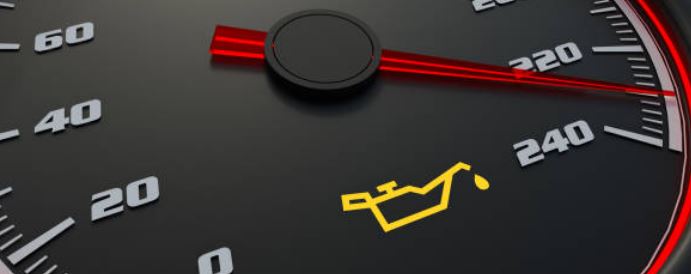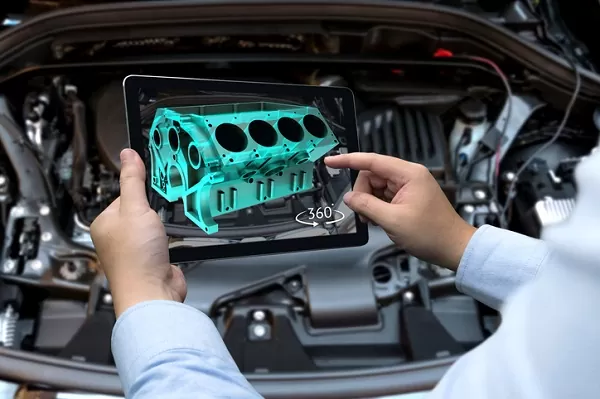When you see the oil warning light come on in your car, it can be a bit of a panic. What does this mean? Is my engine about to blow up? Can I still drive my car? In this blog post, we will answer all of these questions and more. We will discuss what the oil warning light means, why it comes on, and how safe it is to drive your car with this warning, and if so how far or for how long? We will also give you some tips on how to extend the life of your engine by avoiding damage when driving with an oil warning light on!
What Is the Purpose Of Oil In A Cars Engine?
Oil is essential to a car’s engine. It helps to lubricate the engine parts and keep them running smoothly. Over time, oil will break down and become less effective at lubricating the engine. This is why it is important to change your oil regularly. When you don’t change your oil, or if you use the wrong type of oil, it can cause damage to your engine. Depending on how often you drive and the type of oil your car uses, you may need to change your oil every few months or every few thousand miles.
What Causes An Oil Warning Light to Appear?
The oil warning light comes on in a car when the engine is low on oil. This can be caused by many things, such as:
-A hole in the oil pan
-A bad seal or gasket
-Worn out piston rings
-A clogged oil filter
-Leaking valve seals
All of these problems can cause the engine to lose oil, which will trigger the oil warning light. If you see this light come on, it is important to stop driving your car and check the oil level as soon as possible. Continuing to drive with an empty or low oil level can damage your engine and lead to expensive repairs!
How Safe Is It To Drive My Car With The Oil Warning Light On?
If you see the oil warning light come on, it is generally not safe to continue driving your car. The engine needs oil to lubricate the moving parts and cool down. If there is not enough oil, the engine will overheat and this can cause serious damage. In some cases, continuing to drive with an empty or low oil level can even cause the engine to seize up and require a complete replacement!
If you must drive with the oil warning light on, be sure to keep an eye on the temperature gauge. If it starts to rise into the red zone, pull over and turn off the engine immediately. Allowing the engine to overheat will cause irreversible damage!
What Should I Do If My Car’s Oil Warning Comes On?
If you see the oil warning light come on, the best thing to do is to pull over and turn off the engine immediately. Check the oil level and add more if necessary. If your car doesn’t have enough oil, it is not safe to continue driving!
It is also a good idea to take your car to a mechanic as soon as possible to have it checked out. They will be able to diagnose the problem and make any necessary repairs. Continuing to drive with an empty or low oil level can damage your engine and lead to expensive repairs, so it is best to get it fixed as soon as possible.
How Long Can You Drive With Oil Light On?
As long as the oil warning light is displayed, you shouldn’t drive more than 50 miles. If you’re driving on the highway, it’s best to find a safe place to stop and call for help. If you’re driving in town, you can try to make it to a nearby service station. However, if the oil warning light is flashing, you should pull over immediately and turn off the engine. As we already mentioned,driving with an oil warning light can damage your engine, so it’s best to avoid it if possible.
Steps For Topping Up Your Oil – Can You Do It Yourself?
When it comes to topping up your car’s oil, there are a few things you need to keep in mind. First, check your owner’s manual to find out what kind of oil is recommended for your car. You’ll also want to make sure you’re using the right grade of oil – typically, this will be either SAE 30 or SAE 40.
Once you’ve got the right oil, open the hood and locate the dipstick. Pull it out and wipe it clean with a rag; then reinsert it and pull it out again to check the level. If the level is low, slowly add more oil until it reaches the “full” mark on the dipstick. Finally, close up the hood and you’re good to go!
If you’re not comfortable topping up your own car’s oil, there are plenty of places where you can take it in for a quick and easy oil change. Just be sure to call ahead and make an appointment, as most places tend to get busy during the summer months.
Tips For Keeping Your Engine Oil In Good Condition
There are a few simple things you can do to help keep your engine oil in good condition. Firstly, make sure you use the correct type of oil for your car and engine. You can find this information in your car’s owner’s manual.
Also, be sure to check your engine oil level regularly and change it when necessary. Most cars need their engine oil changed every 5000 miles or so, but this varies depending on the type of car and the quality of oil used. Finally, avoid letting your car run out of oil completely – if the engine runs low on oil, it can cause serious damage as we have already mentioned.
Follow these tips and your engine will stay in good shape.
Go Home









[…] make sure to change the engine oil regularly. Dirty oil can gum up the moving parts in the fuel pump, causing it to fail prematurely. […]